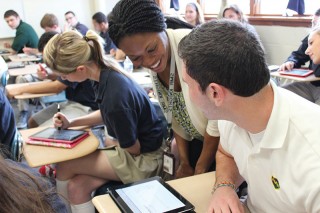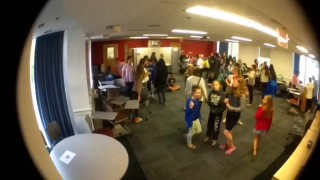What does it mean to gamify your classroom?
History teacher Sara Shreve-Price has been exploring this idea with a Civil War game she developed for her US History class this December. The game is organized on Canvas as a series of levels each representing a period from 1844-1877. Students work through quests along the way to obtain points, which lead them to earn new badges and ranks.
“Gamification often involves using elements from video games in what are traditionally non-game settings,” says academic technology integrationist, Howard M. Glasser.
“Gamified activities often involve a lot of student choice along with quick feedback, and opportunities for players to progress.”
For example, students begin the game as a latrine digger and have the opportunity to work their way up the ranks to the presidency. Students can also work at their own pace, and choose what activities they pursue and when, though there are a few that are required.
Some of the quests include watching videos and answering questions using Edpuzzle, writing short answers and essays, creating an illustrated timeline up to the Civil War, and more. These lessons and quests are then reinforced through in-class group discussions.
Every assignment is an opportunity for the students to build their knowledge and their grade. They are allowed to redo the quests as many times as they want, and are encouraged to find ways to improve their own work.
“I really like that by learning this way it’s more interactive, and that I am constantly being quizzed and learning,” Lexie Osbourne ’20 said. “Instead of having a lecture and then a discussion, this allows me to teach myself at my own pace.”
“I like the gamification model because it brings the narrative to life,” Jayde Dieu ’20 said.
Sara is excited to see students talking about the quests inside and outside of the classroom, and hopes that this gamification model inspires them to take control of their own learning. It is a model that works as a fun motivat


